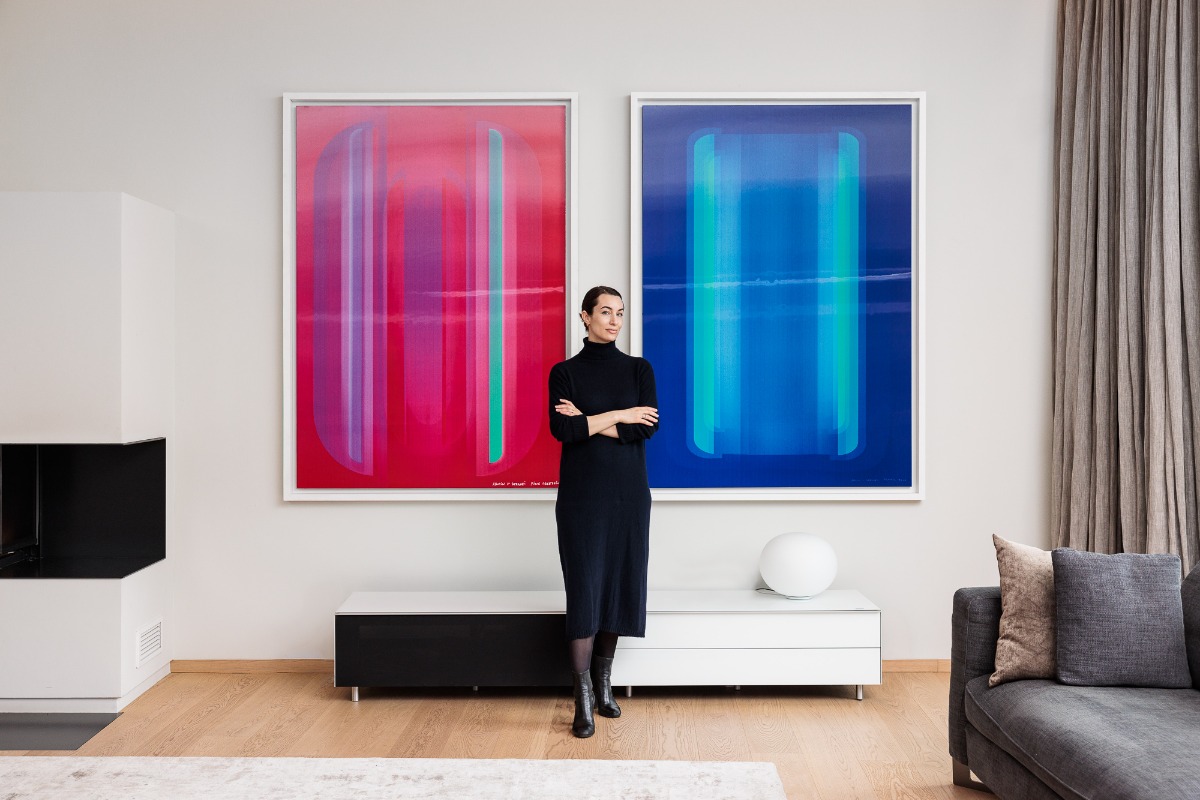
To Every Age its Art
Interview with Marie-Eve Lafontaine, Artistic Director of the Dr. Éva Kahán Foundation – Budapest, Vienna, Tuscany
The Dr. Éva Kahán Foundation is dedicated to the memory of Éva Kahán, married name Éva Aczel. Born in Budapest in 1955, she became a lawyer in Budapest as well as in Vienna where she ultimately moved with her family.
After Dr. Éva Aczel had passed away, her son, Dr. Zoltan Aczel, decided to create a foundation in their mother’s maiden name. The foundation was launched in 2015 and bases its mission on his mother’s strong core beliefs regarding fundamental democratic values: minority rights, artistic freedom, and access to education. Today the foundation has locations in both cities and an artist-in-residency program in the Chianti region of Tuscany.
Dr. Zoltan Aczel studied law and owns a construction company active primarily in Central and Eastern European countries.
Marie-Eve Lafontaine is an art historian who grew up in the USA, Australia, and Canada. She has worked as a curator at several art institutions in North America and Europe. Since 2022, she serves as Artistic Director of the Kahán foundation in both cities and of the Artist-in-Residency Program in Tuscany. She is married to Dr. Zoltan Aczel.
Edouard Angeli, “Lichter Tryptich” . Photo: Manuel Carreon Lopez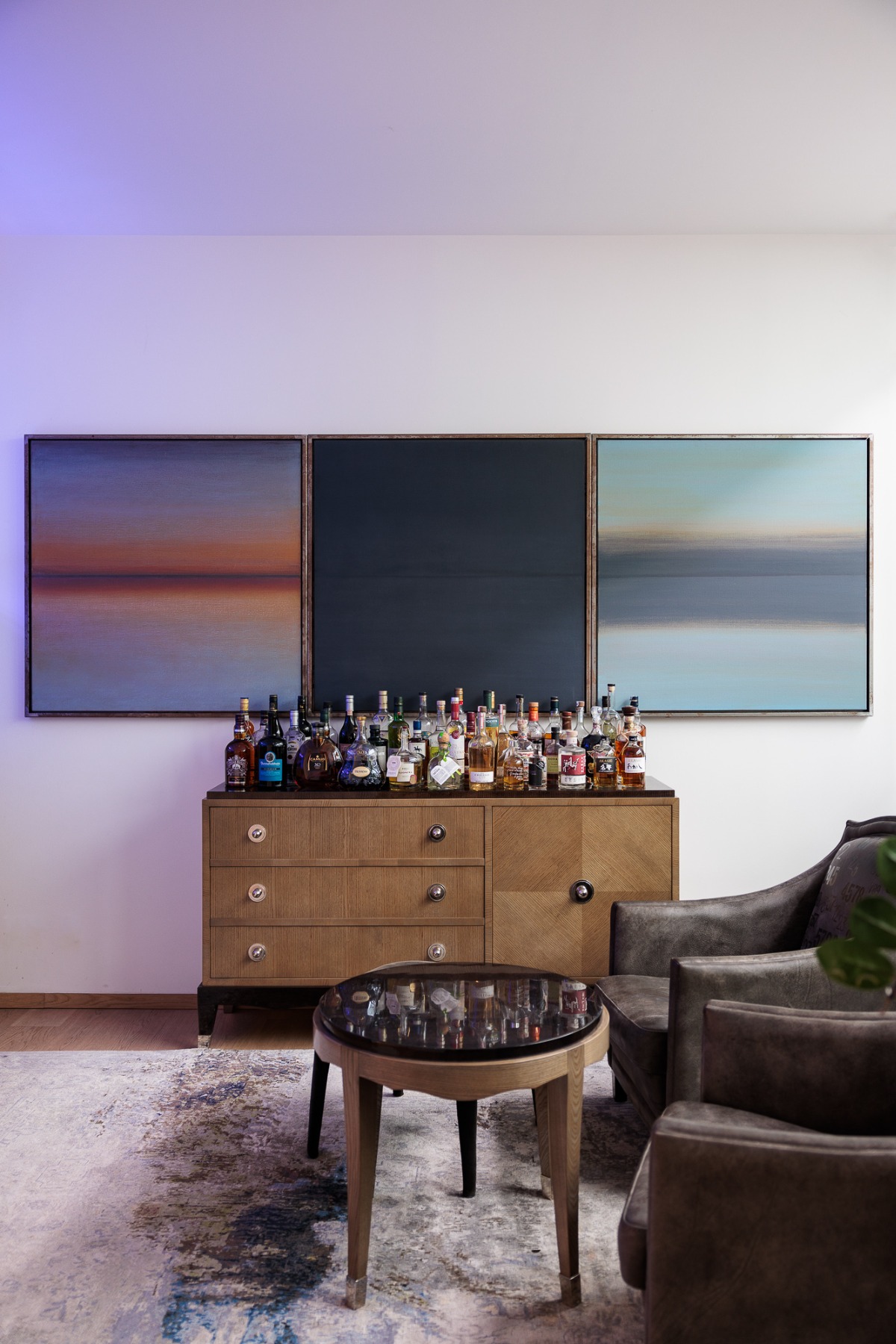
What was the starting idea behind the foundation, what was the reasoning, where was it founded?
The Éva Kahán Foundation was founded by my husband Zoltan in honor of his mother, Éva Aczel, née Kahán. She was a lawyer, originally from Budapest, with very strong political beliefs regarding moral values and human rights. She deeply instilled in her sons her wish for them to continue her work, and when she passed away, her family, led by my husband, decided to create the foundation based on these values and in her memory.
In the beginning the foundation only gave scholarships to young law students in Central and Eastern Europe.
Éva Kahán was interested in fine arts and both of her sons grew up with a keen awareness of culture, politics, and history. The family was not wealthy, so they could not afford to buy big pieces of art, but they spent a lot of time visiting museums and were very interested in cultural life. They travelled extensively and that was unusual for the time. In those days they could only leave Hungary once a year. They would take their little Lada to Madrid or cross Europe all the way down to the end of Sicily for several weeks. They had an aunt living in Paris whom they tried to visit every year.
The foundation was first established only for the purpose of awarding scholarships to disadvantaged students, and then eventually the family decided to expand it to include contemporary art.
Emanuela Lekić (right), “Main Square”, Márton Romvári, "Törékeny Egyensúly I.” Photo: Manuel Carreon Lopez
How are these scholarship programs organized?
We have an open call that is specifically targeted to minority cultures and less fortunate students, financially poor students. Most of our applicants are Roma and Sinti because there is a very large minority population in Hungary, which really suffers from discrimination. The idea was to start to help these students with their education by covering their tuition and living expenses, and the hope was that when they had finished their degrees they would go back to their home villages and start to work for social change in the countryside where they had grown up. This was really the original purpose of the foundation.
My husband began to collect more art when we got to know each other and I tried to bring his attention to lots of young artists from the Eastern European region. I came from an institutional background and had mostly worked in museums. Starting in my early twenties, I worked with the Trafo Centre of Contemporary Art in the city of Stettin, Poland. It was through this job that I first came in contact with Polish artists and then with artists from greater Central and Eastern Europe. I was always so impressed by the quality and originality of their artistic work, not only the craftsmanship, but these were artists who had something to say!
Juraj Florek, “San Sano Polis” Series. Photo: Manuel Carreon Lopez
They were not creating something to sell it to some millionaires to hang over their sofas. First of all, many of these artists had no expectations whatsoever that their art would sell and, second, they wanted to express very strong messages in visual ways – either about society, about the political situation, or about their own personal history. This I found extremely interesting and when I met my husband, I started to show him around all these different artist’s studios. And so he also became acquainted with them.
The foundation’s first exhibition space in Budapest initially served as a project space for very young Hungarian artists. In 2020 the family decided to open a second space in Vienna. Next to our foundation space here in Vienna we have a fine-dining restaurant called Kraus, which is directly connected to the gallery space.
Balázs Sipos, “Róka”. Photo: Manuel Carreon Lopez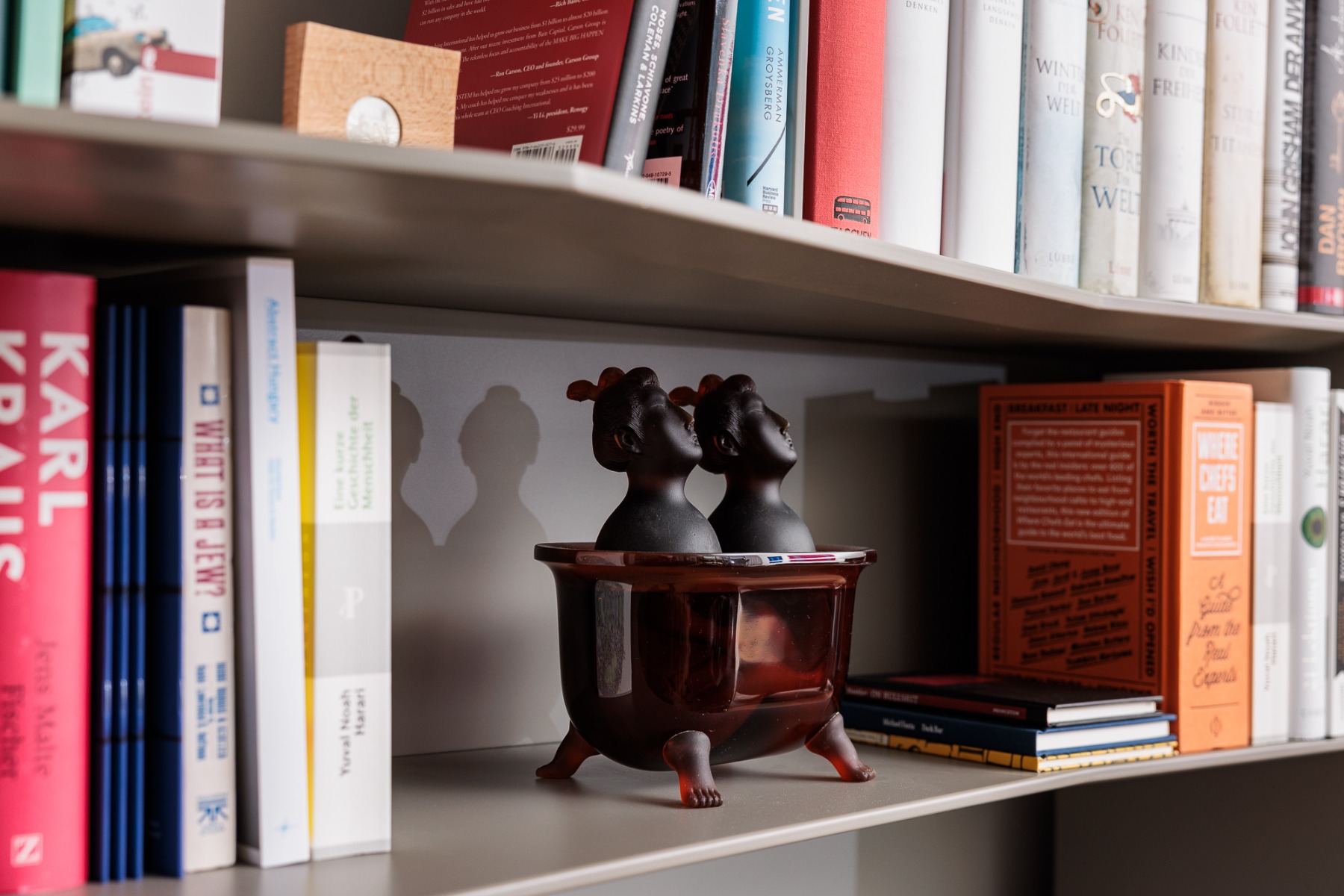
How do you organize the residency project, how do you find the artists? How do they find you? Is there a committee or do you and your husband manage the program on your own?
As both of us came more and more in contact with the artists, we decided that we wanted to expand the foundation to include not only an art space, but also a residency program. We realized that collecting is one thing and it’s a really nice feeling to acquire a beautiful piece of art and hang it on the wall. But we are much more interested in the scholarship program and helping and connecting exciting young artists.
Regarding the artist-in-residency program, we put out an open call each year. We have been doing this for several years now in Tuscany. We usually announce it in summer and we actually do very little advertising. We have found that word of mouth has spread far and wide and we often receive more than 200 applications a year.
The artists are either in the final years of their studies at art academies or at the beginning of their careers. We put out a last call and then select, in a first round, about 40 artists. So much depends on what you have done so far in your life, for instance, if you have kids, you have to take off a certain amount of time from your career, especially if you’re a woman. We always try to gain a deeper understanding of the personal situation. We look at artists at a certain stage in their careers who might need a little push. Our only requirement is that artists hail from the Central European region, which is of course the main focus of the foundation!
Basically, we start with Austria, and from there we move eastwards to the former Eastern Bloc countries, but it’s a mixture, everything factors in.
Then we have to reach a joint decision together with the eight board members of the foundation. We go through all the applications, narrow them down and compile a list. When we get down to ten, we start to conduct interviews, which usually takes us one week. In the end, we pick three artists. The foundation pays for their travel costs and gives them a monthly scholarship during their stay in Italy.
Arotin & Sergei, “Everything We See Could Also Be Otherwise”. Photo: Manuel Carreon Lopez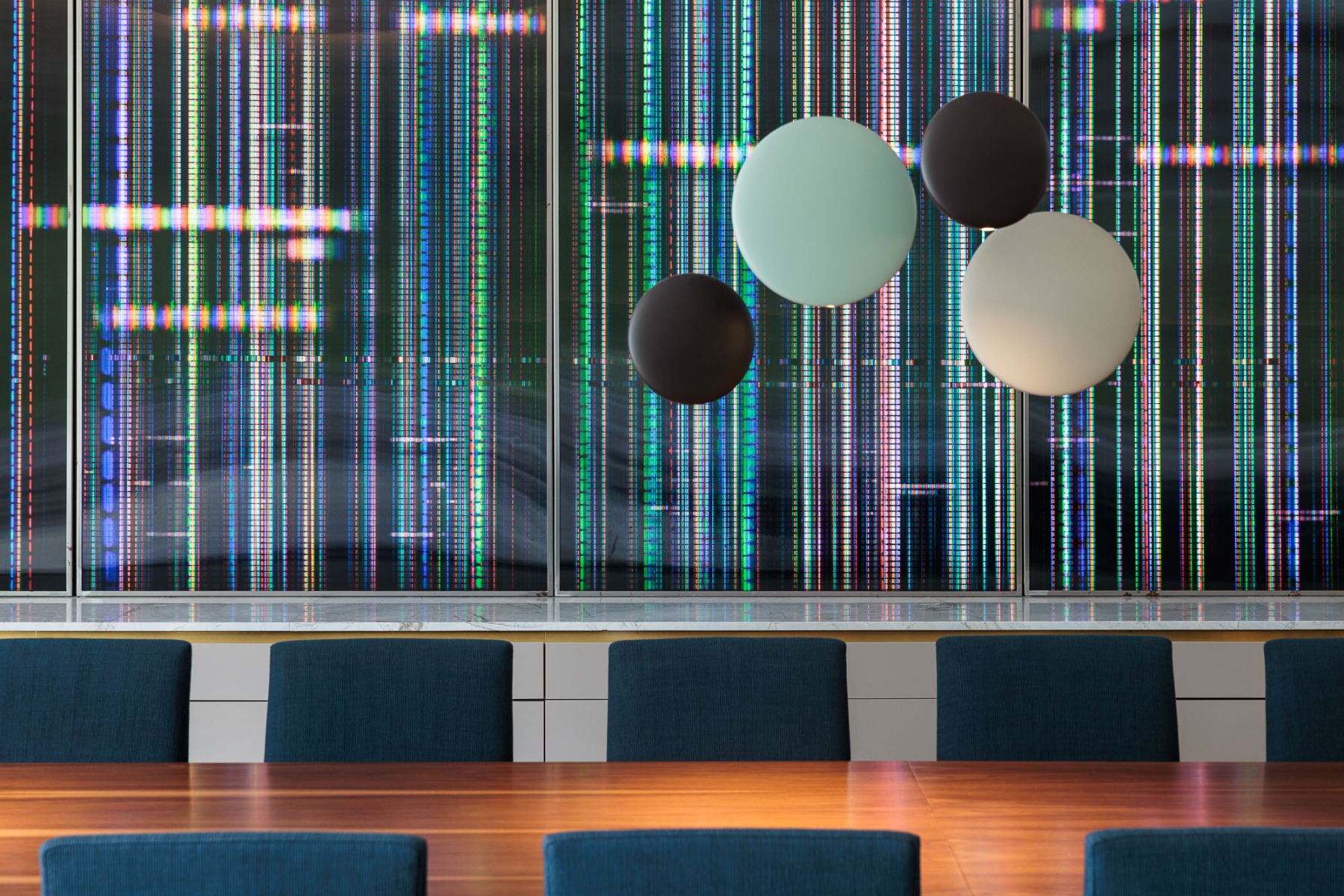
Who are the members of the board?
Some members are actively involved in the art scene while others are close family members. The reason being that the art residency takes place at our personal home in San Sano, Tuscany – in the Chianti region. We offer each artist one to two months in spring and they stay in a guesthouse located on the property. During their residency, we always come and visit, and we bring our children and family members. Additionally, once a year we organize a trip together with institutional professionals, such as curators, gallerists, museum directors, or art journalists. It’s a different group every year.
Balázs Sipos, “Róka” (bottom), Andreas Greiner “Non-Fungible Token” (coin, lower centre left), Karl Kranner “Mushroom” (upper center right), Judit Kis “Tranquil (Jade Stone)” (top). Photo: Manuel Carreon Lopez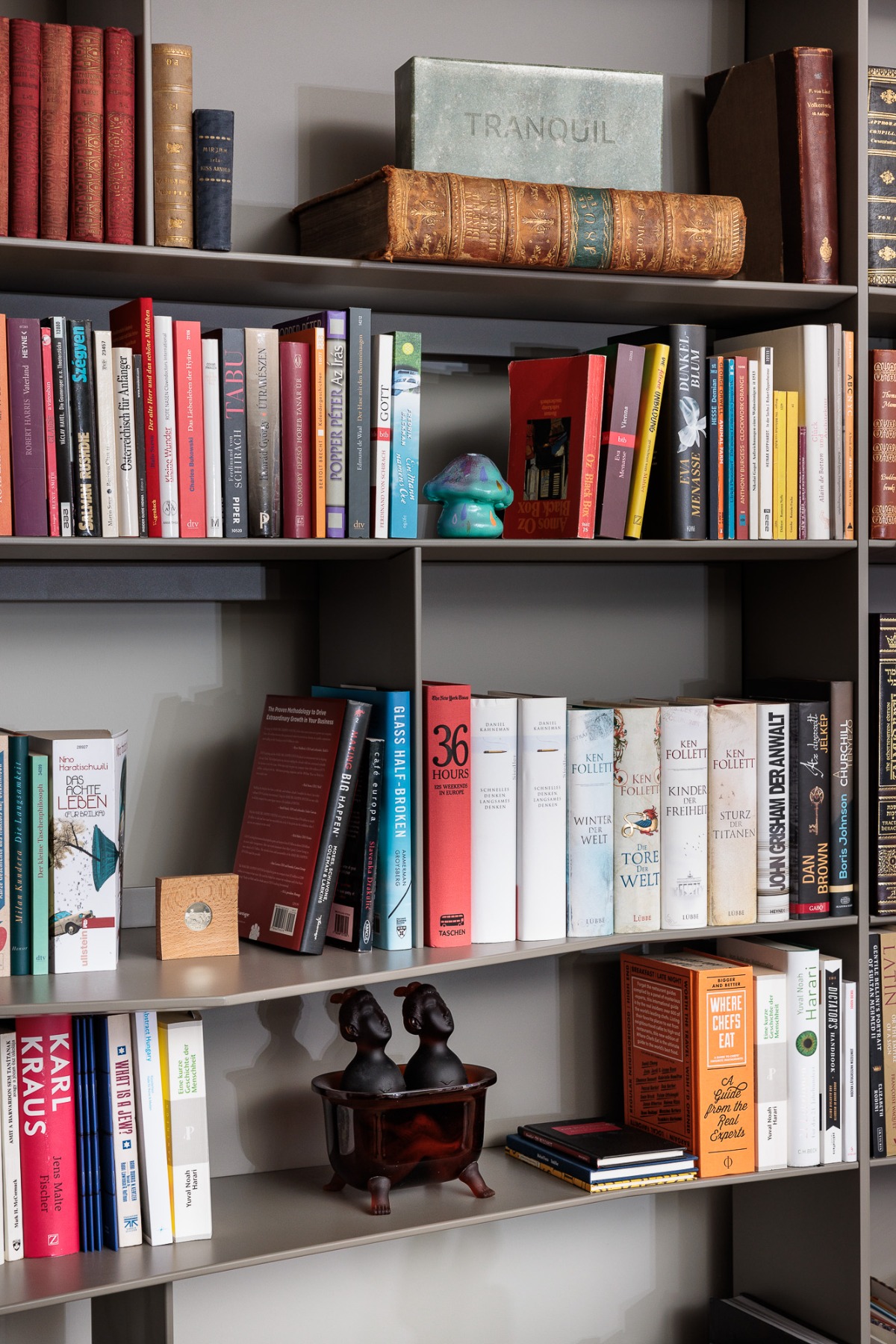
That’s quite an organizational process…
Yes, and it’s by “invitation only.” We bring all of these people to our house, we put them into contact with the artists, we allow them to show what they’ve been working on, and we do like a little “studio run-through” or a “work critique.”
We stay there for about three to four days and it’s a great experience, and we’ve also made lots of friends among the artists. For many artists, this has hugely boosted their artistic process, their self-esteem, and their professional career.
The “AIR” only exists since 2018 and in 2019 the first artists came.
A lot of the artists in the residency program went on to get institutional shows, were offered new representation with galleries, or they got different reviews.
We try to support the artists in the way that we bring them together with contacts that can benefit their future careers. In the end we spend so much time with the artists that they become really good acquaintances or even friends. I cherish the time we spend together with them. My husband enjoys it very much, too. You know, he is always in business meetings, travelling, etc. and that makes it particularly interesting for him, and it also adds so much to our lives.
I’ve always seen it as a privilege to be able to work with artists. Above all, the way they see the world is so unbelievably unique, and it can teach you so much, not only about liberal values, and thinking.
In my life, art is very important; it makes me happy.
Now, as a collector and no longer an institutional curator, I’m on the other side of the table. I’m lucky that I can activate my previous network for the benefit of the residency program.
Exhibition view, Małgorzata Mirga-Tas, “Screen Test” at the Kahan Art Space Vienna. Photo: Manuel Carreon Lopez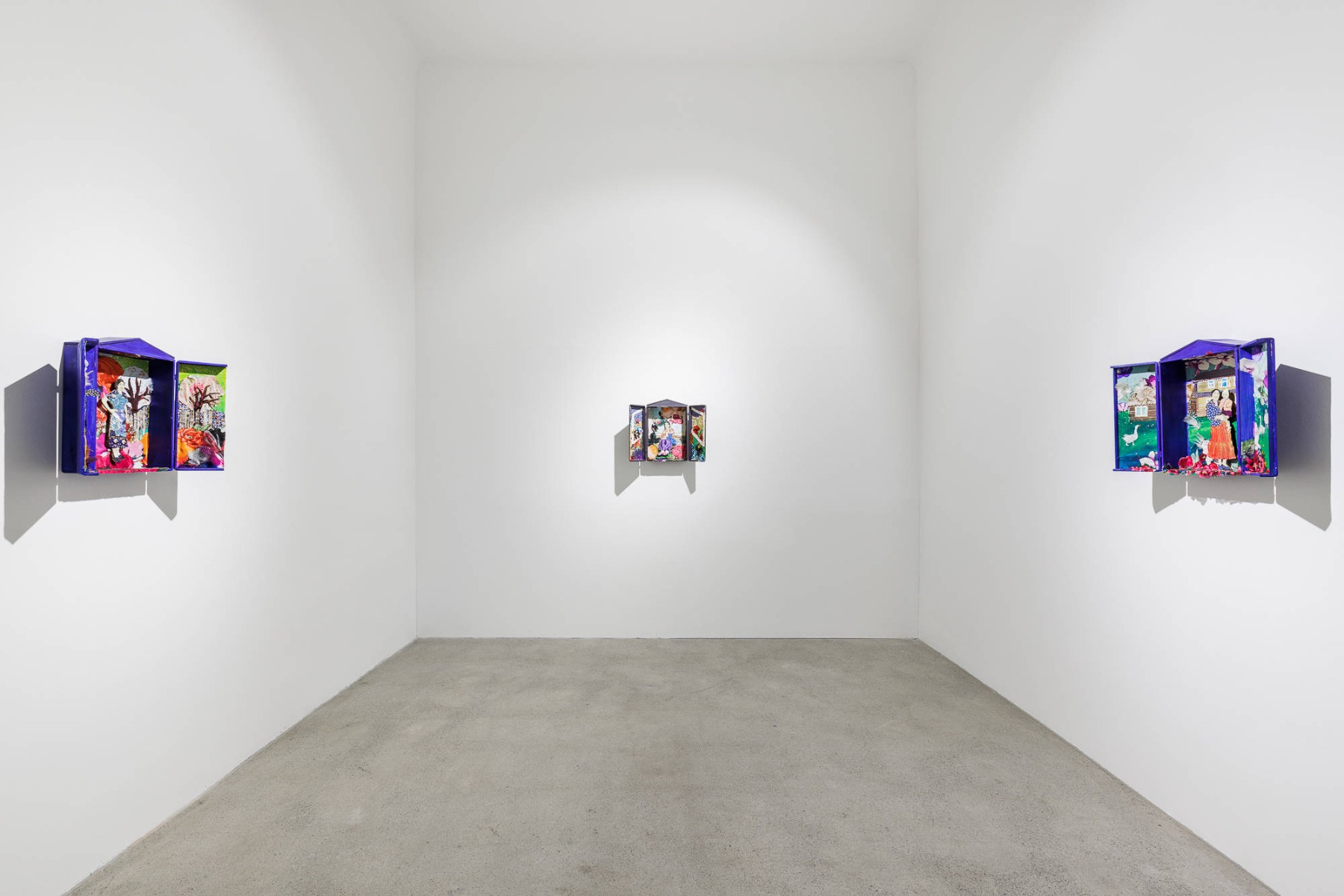
Exhibition view, Małgorzata Mirga-Tas, “Screen Test” at the Kahan Art Space Vienna. Photo: Manuel Carreon Lopez
How many artists do you exhibit in Vienna?
In Vienna we always have four shows. We do a solid institutional calendar with two shows in the first half-year and two shows in the second. So far, we have launched a much larger number of shows in Budapest. The space there was more run as a project space, but now that we are gaining in international prominence, we decided to bring the program of both spaces closer together. All the artists we are showing Vienna will be shown in Budapest, too, and vice-versa, it will become a rotating program between the two cities.
Exhibtiion view, Daniel Rycharski, “Cages” at the Kahan Art Space Vienna. Photo: Manuel Carreon Lopez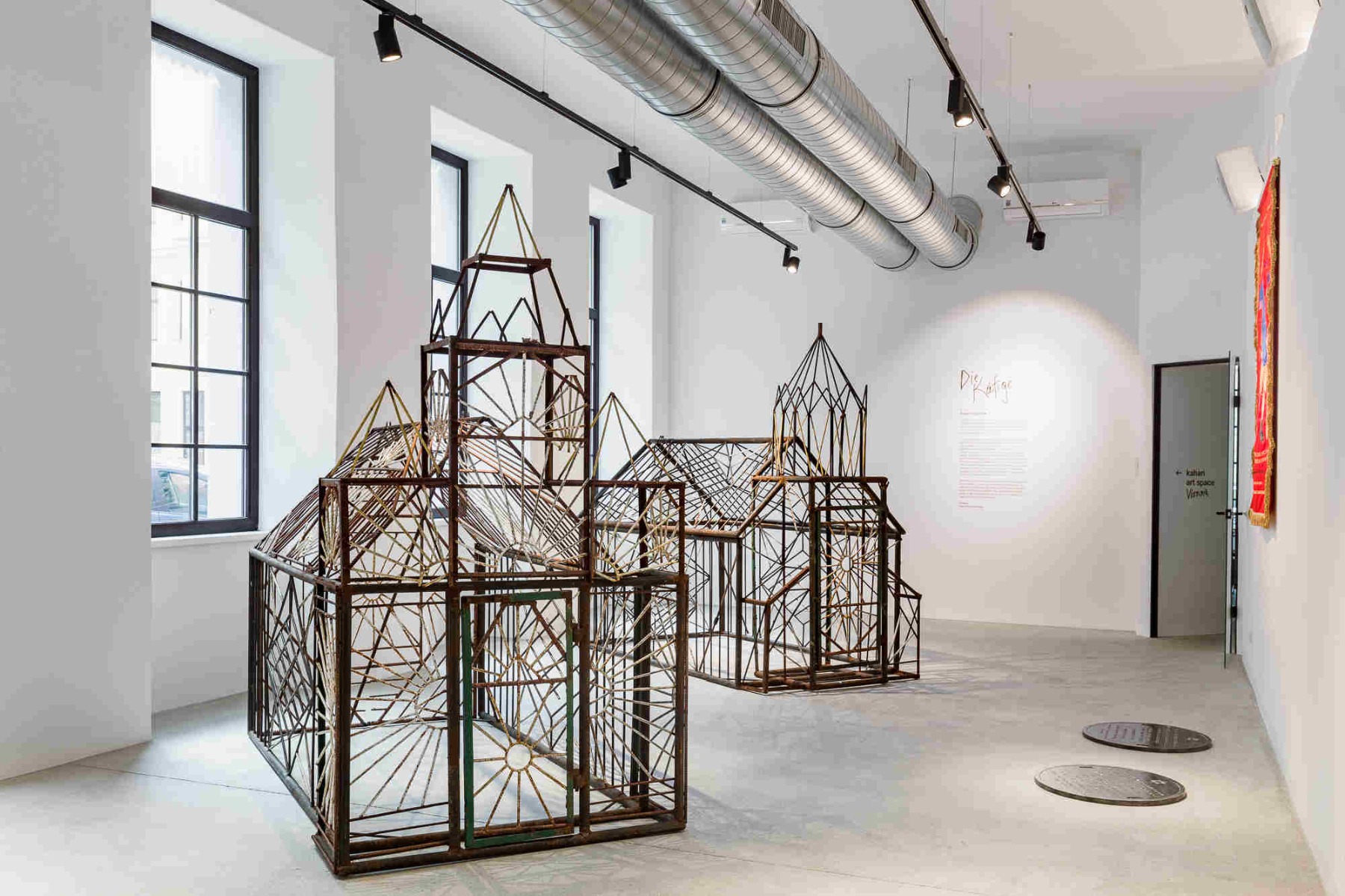
How does the foundation space compare to the one in Vienna, is it smaller or bigger?
We have a small space there where we used to do exhibitions and we are currently renovating a new space in a warehouse, outside of the center of Budapest. There we want to do more exhibitions. The exhibition hall is about 350 square meters and the ceiling height is 15 meters. This will become more institutional as we are able to show bigger installations.
The good thing about the warehouse is that you can work there as well. It is in the same building as the offices of my husband and we expect to have much more institutional partnerships, so the shows we are doing in Budapest can travel to other institutions in Europe.
Since we are one of the very few independent space initiatives in Budapest and as we are financially independent, we can launch shows like the one that recently opened in Budapest with the artist Esther Agnes Szabo, who is highly politically vocal. She works with “domestic products” like “ceramics and sewing, embroidering.” In her artworks she implements “protest messages” and she is very pro-LGTBQ. This exhibition you could never have in a public Hungarian museum, and not even if you would put it into a gallery, they would get under a lot of pressure. It is a tough situation we are dealing with. But it all depends on how things will develop in the years ahead.
Exhibition View, Andreas Greiner “Jungle Memory” at the Kahan Art Space Vienna. Photo: Manuel Carreon Lopez
You are a collector as well. Do you build your collection together, as a couple, or are you two separate collectors?
Well, it first started as a family collection, the close family of my husband. Ever since we’ve been together, and we’ve now been married for two years, we have handled this in a very deliberate manner: if anything is above a certain larger amount, then we have to decide on it together. We have a budget for the year, roughly, but if we see a really, really wonderful work we would like to have, we will still go for it. For example, a few years ago we came across a very beautiful Klimt, a work on paper, which normally we would never consider buying, but we couldn’t resist and we had to have it.
Exhibition View, Anna Hulacova, “Bugonia and Alien Bees” at the Kahan Art Space Vienna. Photo: Manuel Carreon Lopez
Exhibition View, Anna Hulacova, “Bugonia and Alien Bees” at the Kahan Art Space Vienna. Photo: Manuel Carreon Lopez
You are focusing the foundation on contemporary art. How far back does your collection cover the early years of this period?
Our earliest work is from late 19th century—we are not collecting earlier than “Wiener Werkstätte.” Almost all of the artists in our collection are still alive and it is important for us to know them personally.
This style of collecting that is only aimed at blue-chip “investment” art is not interesting to me. This is a full-time job and you have to be extremely well informed! You need an art-adviser as well who is going through all the catalogs, auctions, and exhibitions and you have to know the work of an artist very well! It’s a very intense and time-consuming process.
Basically, for my husband and me, it is about the people and it is not only about their art!
The people who are doing all of this work are really the most exiting aspect of the foundation. And especially because our attitude was shaped by the scholarship program, the idea was: we directly want to help the people and want to know them. Also, when it comes to collecting contemporary art, it’s very nice to have nice things, but I don’t like the idea of having big expensive things around me just for the sake of showing off. As a collector, your actions have to serve a larger purpose than that. Art plays a big role in making the world a better and more inclusive place, and the way I see it, our foundation has a responsibility to fulfill that mission.
Marie-Eve Lafontaine (behind - work by Alicia Viebrock "Beg Hell for Money”). Photo: Manuel Carreon Lopez